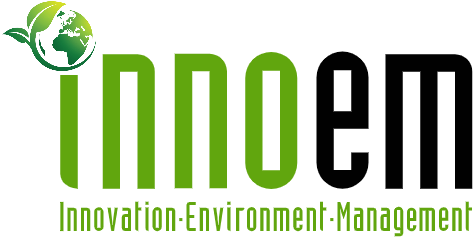
While adopting a “wait and see” approach might seem appealing, an increasing number of companies are developing their own solutions to reduce this gap internally. Here are four strategies.
Businesses in various sectors are facing growing pressure to embrace sustainable practices, reduce their environmental impacts, and provide CSR reporting and transparency as part of their commitments. As the demand for sustainability grows, the need for skilled professionals and employees who can effectively implement strategies and practices across organizations and supply chains is also increasing. However, many companies lack the talent with the knowledge, experience, and skills required to achieve sustainability goals.
Companies are realizing that the demand for sustainability talent outweighs the supply; and the gap is widening further — as sustainability roles expand and new ones are created, having just a Corporate Sustainability Officer isn’t enough. The International Labour Organization suggests that by 2030, a worldwide commitment to net-zero could create 18 million net new jobs. Recent research revealed that 82% of sustainability managers believe there are significant skill gaps within their organizations to address sustainability requirements. The World Economic Forum directly links the lack of qualified talent to be a major obstacle in implementing sustainability strategies. While the UN Global Compact calls for direct action to bridge this skills gap, it encourages companies to prioritize and invest in skill development, re-skilling, and up-skilling their teams.
Although a “wait and see” approach might be tempting for companies, it won’t close the gap fast enough and will have negative consequences. More companies, including Microsoft, Salesforce, and Interface, are now focusing on developing and implementing their own solutions to internally reduce this gap.
Internally addressing the gap in sustainability skills will be crucial for businesses to achieve their sustainability goals. Here are four strategies.
Make Sustainability a Strategic Priority
First and foremost, a robust sustainability strategy sends a clear signal to potential and current employees that a business is committed to sustainability. This can be a significant selling point for job seekers who want to work for a company that shares their values. By openly committing to sustainability and investing in the necessary resources to achieve sustainability goals, businesses can attract top talent and create a passionate workforce dedicated to sustainability. However, this isn’t just about attracting the right talent—it’s about engaging and motivating current employees to develop their skills through a sustainability strategy.
Investing in a sustainability strategy can also help businesses stay ahead of trends and regulations. As governments worldwide introduce stricter sustainability regulations, businesses with a proactive approach to sustainability will be better positioned to adapt to these changes. By investing in a sustainability strategy now, businesses can ensure they have the knowledge, skills, and resources needed to comply with future regulations and stay ahead of competitors.
Provide Training Across the Organization

While these might be some of the most obvious strategies, education and training programs are essential for developing the skills and knowledge required to effectively implement sustainable practices. These programs can take various forms, including workshops, online courses, mentorship programs, internships, and more, tailored to specific job functions and levels. They can be developed internally, acquired online, and even co-developed with educational institutions.
The key is to elevate your existing workforce while preparing for future talent. This focus should consider both internal and external training opportunities. Microsoft serves as an excellent example of addressing both sides of the sustainability skills gap—focusing on internal training for employees while creating external learning opportunities through the Sustainability Learning Center.
Integrate Sustainability into Company Culture
While planning and training are crucial tools for providing knowledge and setting the stage, embedding sustainability into the corporate culture is what makes sustainability efforts meaningful. In 2021, the World Economic Forum published research indicating that companies with a strong sustainability culture are more likely to attract and retain employees with the appropriate skills and knowledge, reducing brain drain.
Creating a culture rooted in sustainability requires developing an environment that values and encourages sustainability skills development among employees, regardless of their job responsibilities. Businesses can start by creating plans that outline sustainability purposes and goals and communicate these plans in a format that not only garners participation but also makes every employee feel they have a role to play in implementing the plan.
Enabling agencies to develop and propose new sustainability initiatives through volunteer opportunities or employee resource groups, and providing channels for employees to implement sustainability goals, creates a rich internal ecosystem for sustainability growth. Recognizing and celebrating employees who show leadership and innovation and applauding teams that achieve sustainability goals are additional strategies that inspire and motivate employees to champion sustainability within the organization.
Incorporate Sustainability into the Employee Lifecycle
Companies should prioritize sustainability throughout the employee lifecycle and integrate it into their main HR functions. A Harvard Business Review study found that including sustainability goals and social impact considerations in attraction and recruitment processes and involving them in the employee lifecycle can improve employee engagement and retention. For instance, job descriptions, interview questions, and selection criteria can emphasize the importance of sustainability skills and experience, as well as a willingness to learn new sustainability skills.
Investing in sustainability initiatives can offer employees ample opportunities to develop their skills and enhance their knowledge in this critical area. Ensuring that sustainability aspects are included in regular HR functions like professional development, check-ins, and performance reviews ensures that leaders are aware of specialized skill development and can match employees with new opportunities as they arise within the company.
To remain competitive in the market, companies need to proactively address the sustainability skills gap by prioritizing sustainability, investing in education, integrating sustainability into culture and human resources functions, and taking actionable steps to bridge the gap. Taking a proactive stance on tackling this business challenge will not only have a clear positive impact on performance across environmental and social factors but also allow companies to stay ahead of the curve. Companies that fail to do so will fall behind.
Source: https://sdgmapturkey.com/haber/surdurulebilirlik-becerileri-boslugunu-kapatmak-icin-4-strateji/

